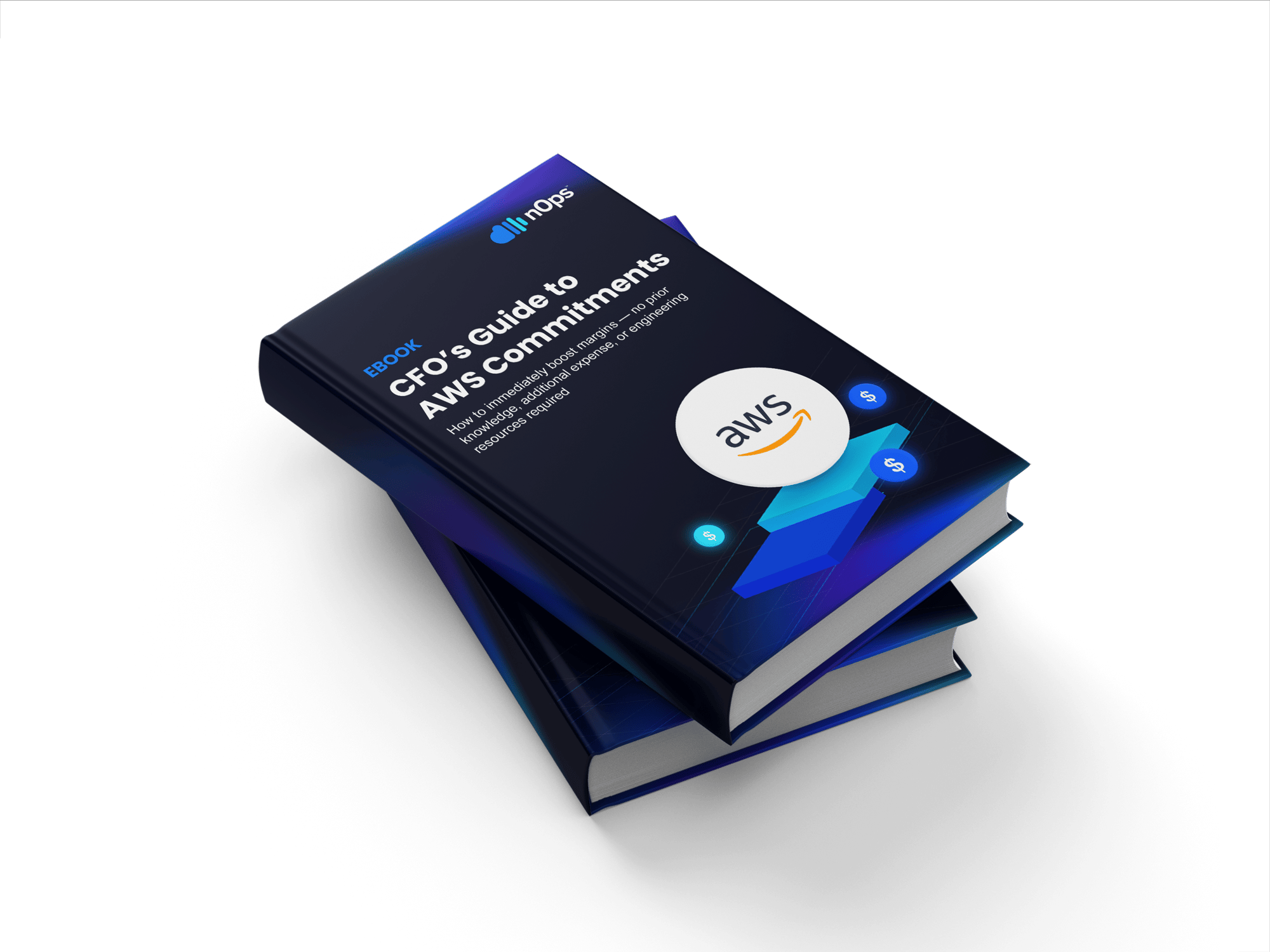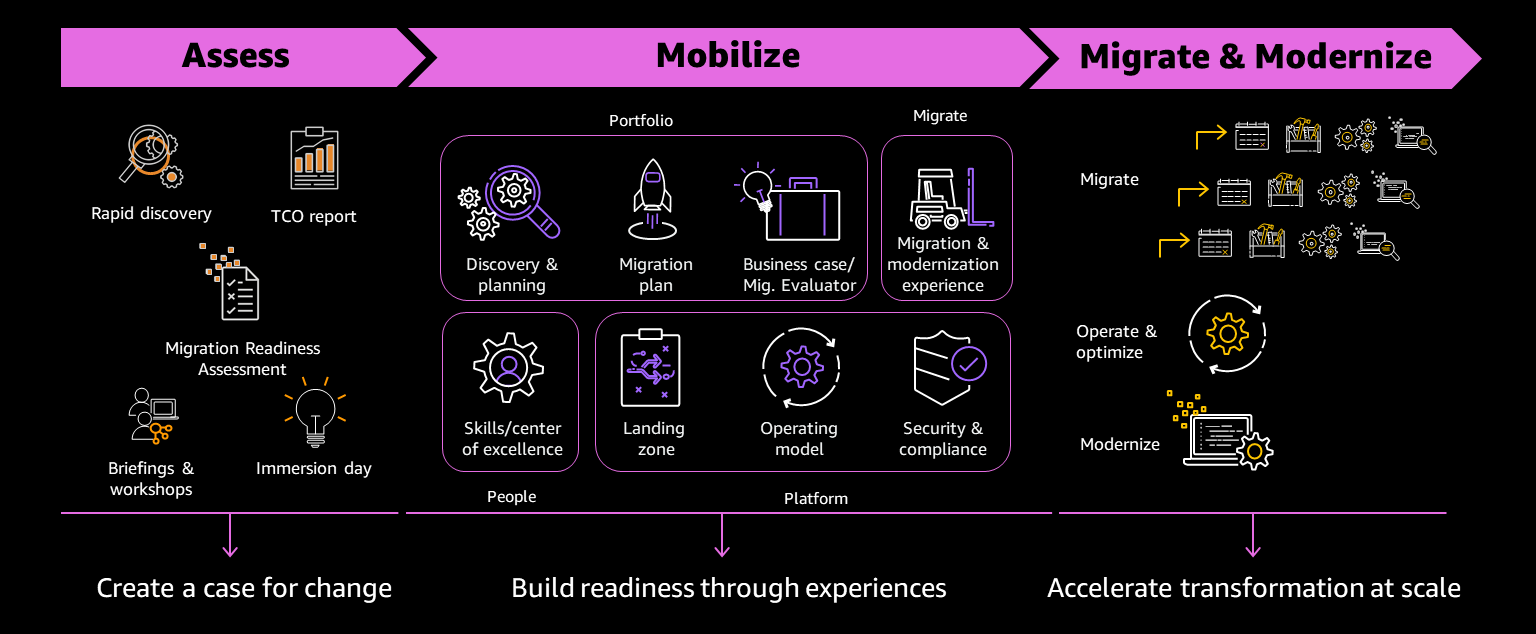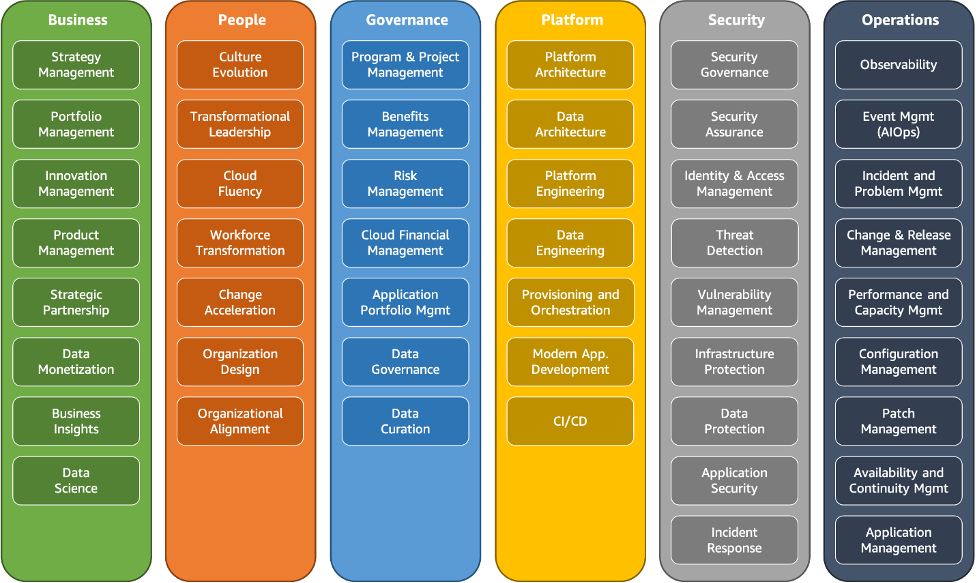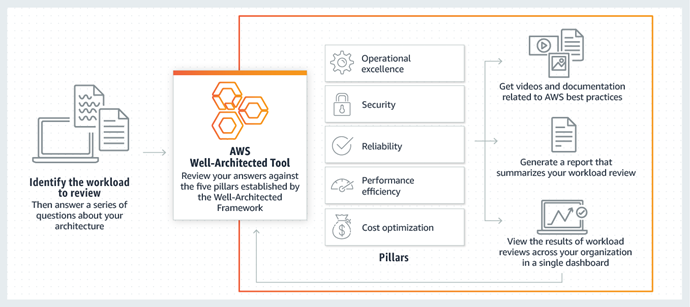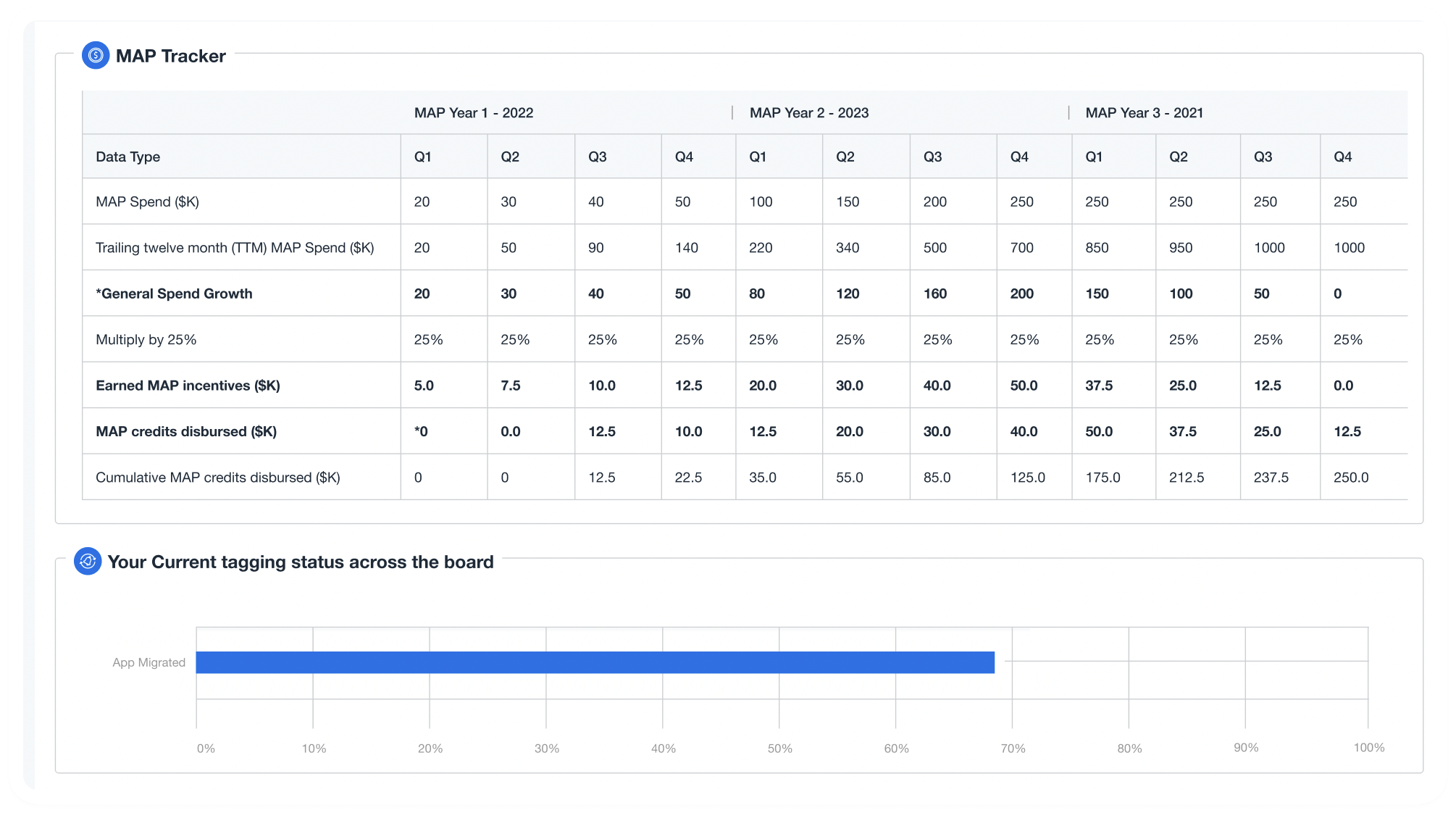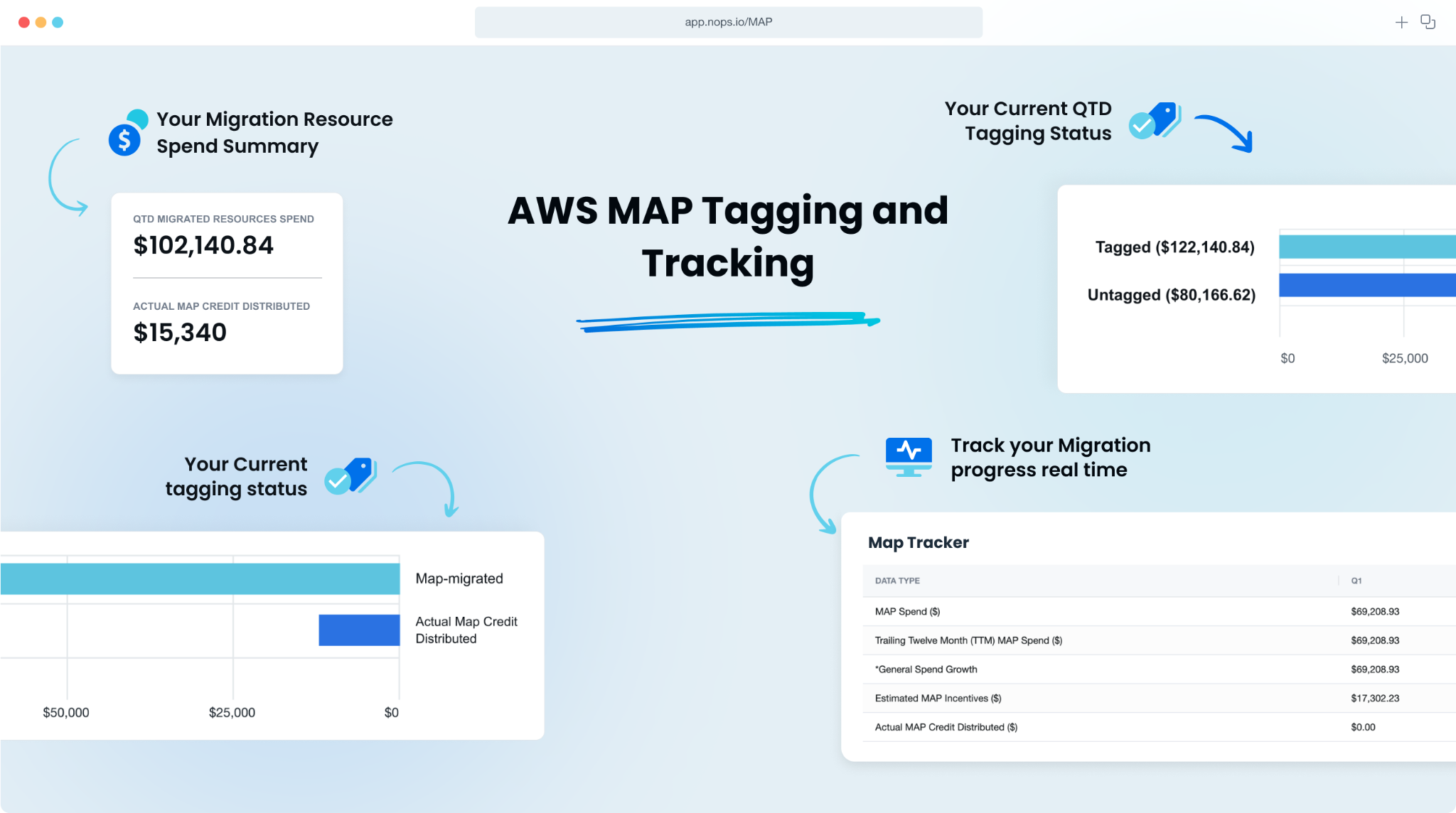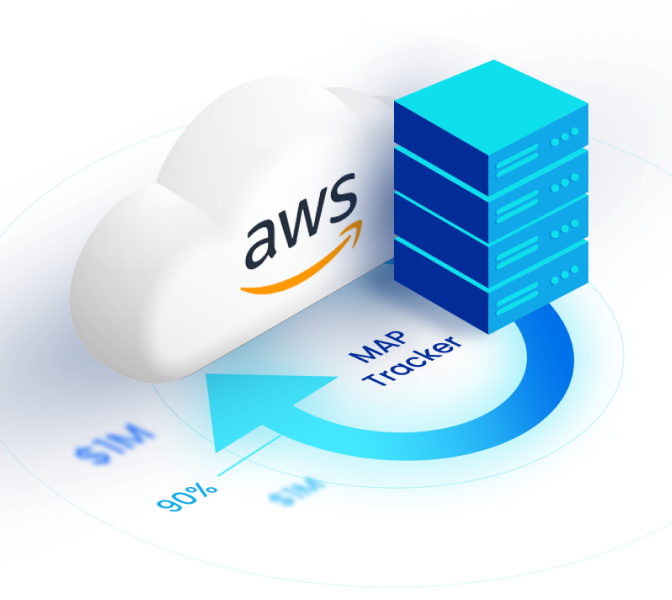Understanding AWS MAP and How to Maximize Cost Savings
AWS launched the Migration Acceleration Program (MAP) to make it easier and more cost-effective for businesses to move to its cloud. MAP is ideal for businesses looking to migrate from on-premises or other cloud providers to AWS while minimizing costs and operational risks.
In this article, we’ll cover AWS MAP and its benefits, how it works, and strategies for maximizing your financial benefits with MAP.
What is Cloud Migration?
Cloud migration involves moving workloads—such as applications, data, and infrastructure—from on-premises environments or other cloud providers into AWS. For many organizations, the move is driven by a need to modernize legacy systems, improve reliability, or shift to usage-based pricing. But large migrations often come with high upfront costs and pressure to prove ROI fast. AWS created the Migration Acceleration Program (MAP) to reduce the financial burden and provide a clearer path to realizing the benefits of cloud.
What is the AWS MAP Program
The AWS Migration Acceleration Program (MAP) helps companies move their on-premises workloads to AWS with a structured approach and financial support. AWS provides migration credits to offset some of the initial costs, making the transition more manageable.
The program also includes best practices, methodologies, and technical guidance based on the many migrations that AWS has performed to help streamline the process, reducing the complexity and risks typically associated with cloud migration. It uses a three-phased approach (Assess, Mobilize, and Migrate and Modernize) that we’ll discuss in more detail later in the article.
Do You Need AWS MAP During Cloud Migration?
Not every migration requires AWS MAP—but skipping it can mean leaving money and support on the table. If you’re moving a significant number of workloads or modernizing critical systems, MAP can offset upfront costs, reduce risk, and accelerate your timeline with structured support.
It’s especially useful for teams without dedicated migration experience or those under pressure to hit budget and timeline targets. Even if you’ve already started migrating, MAP can still help—but planning early can help you unlock more value from the program.
Benefits of AWS MAP Program
Accelerated and Streamlined Migration Process
MAP speeds up the migration process, enabling a faster transition of workloads and applications to the AWS cloud. This is accomplished with a structured three-phase approach (Assess, Mobilize, Migrate & Modernize) to reduce delays and rework. It includes AWS migration tools, Landing Zone setup, and PoC support to accelerate and de-risk the transition.
Financial Incentives
AWS provides AWS MAP credits based on migrated workload spend, to make migrating to AWS more cost-effective. Credits are applied quarterly and can significantly reduce upfront cloud costs, especially for large-scale migrations. MAP also funds migration planning and readiness activities, not just the migration itself.
Opportunities for Modernization and Cost Optimization
Beyond just lifting and shifting workloads, MAP encourages modernization and improved efficiency — whether that means refactoring applications, adopting managed services, or aligning with cloud best practices. But it’s not automatic; taking full advantage of this requires effort and investment on your end.
Reduced Risk
By funding assessments and offering a structured plan, MAP helps identify operational gaps—like missing automation, skills, or security controls—before migration begins. This reduces the likelihood of failed cutovers, overspending, or technical debt in the new environment.
Access to AWS Expertise
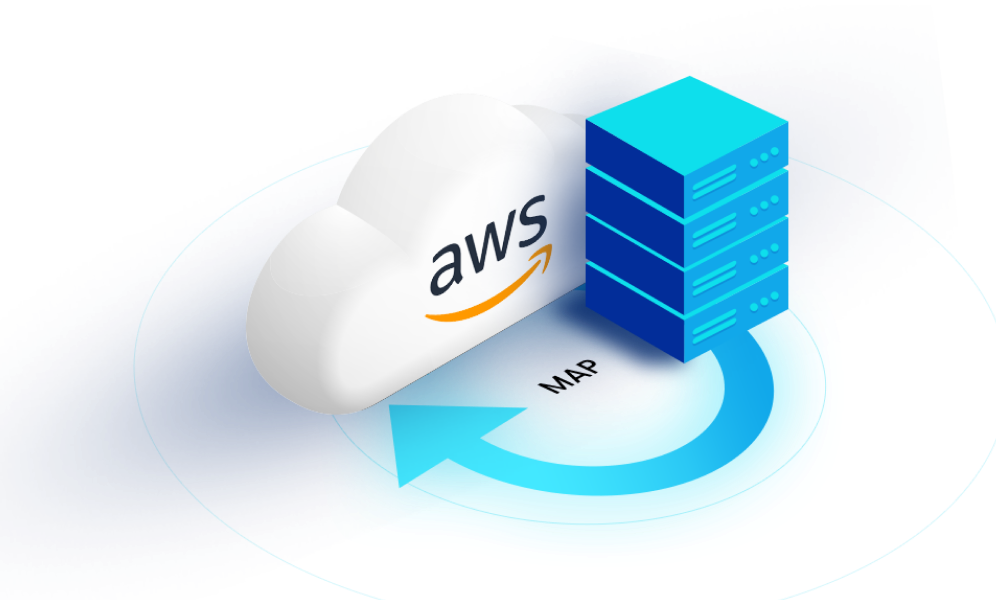
How does the AWS Migration Acceleration Program work?
1 - Assess Your Readiness
In this first step, you conduct a Migration Readiness Assessment (MRA) to evaluate your organization’s preparedness across six AWS Cloud Adoption Framework (CAF) dimensions: business, process, people, platform, operations, and security. You should also do a Total Cost of Ownership (TCO) analysis to ensure it makes financial sense to migrate to AWS.
If you’re looking for support, AWS and AWS partners can help with assessments and guidance.
2 - Mobilize Your Resources
AWS Migration Tools
3 - Migrate and Modernize
In this step, you actually move workloads to AWS using migration services, partners, and automation tools. Proper tagging is required to track eligible spending and receive AWS MAP credits. Modernization can involve refactoring applications, adopting AWS-managed services, and optimizing infrastructure for performance and cost efficiency.
To support your migration project, AWS offers a suite of migration tools. For example, AWS Application Migration Service (MGN) simplifies rehosting by automatically converting source servers to run natively on AWS, minimizing downtime. AWS Database Migration Service (DMS) enables seamless database transitions with minimal disruption, whether you’re moving to RDS or a different database engine. AWS Server Migration Service (SMS) simplifies lift-and-shift migrations by automating server replication. These tools work alongside MAP incentives to lower migration costs and operational burdens.
How to Maximize Cost Savings with AWS Map Program?
To get the most out of AWS MAP, you need to ensure your workloads are properly tagged before migration—otherwise, you won’t receive credits, and AWS won’t retroactively apply them.
This often becomes a challenge when finance teams expect a certain amount of credit, but engineering teams handling the migration aren’t aligned on tagging requirements. If these teams aren’t in sync, workloads can be migrated without the necessary tags, leaving credits on the table.
Identify Eligible Workloads and Services
If you don’t know which workloads qualify or whether they’re tagged correctly, it’s easy to miss out on financial incentives. Before migration, ensure you understand which workloads and infrastructure components are eligible for AWS MAP funding, and which workloads that are eligible have been tagged (versus still need to be tagged).
Since AWS only applies MAP credits to workloads that are tagged before migration, having a system to track eligibility and tagging status is critical. Without this, you risk losing credits simply because of tagging oversight.
nOps gives you real-time visibility into which workloads have been properly tagged for AWS MAP credits and which still need attention, ensuring you stay on track and don’t miss any tags.
Set Up Proper AWS Resource Tagging
It’s key to note that AWS MAP credits aren’t automatically applied to all migrated workloads—they’re only issued for workloads that meet AWS’s tagging requirements before migration. If workloads aren’t tagged properly, MAP funding can be delayed or lost entirely, and AWS won’t retroactively apply them after the fact.
To ensure projected savings align with actual credits received, finance teams need visibility into tagged MAP spend alongside total AWS spend. That requires a structured AWS MAP tagging approach:
- Tag workloads before migration. AWS uses a required tagging system to track MAP-eligible workloads, making proper tagging essential for cost and usage tracking.
- Use AWS Cost Allocation Tags. These help separate MAP-eligible costs from general cloud spending, ensuring only the right workloads count toward credits.
- Regularly audit and validate tags. Since AWS won’t apply credits to workloads tagged after migration, it’s critical to confirm that all eligible workloads are properly tagged ahead of time.
- Align finance and engineering teams. Finance expects MAP funding based on migration agreements, but engineering owns the implementation. Without a shared tagging strategy, workloads can be migrated without the required tags, leading to missed credits and reduced financial benefits.
Track Map Credits Consumption and Forecast Usage
AWS MAP credits aren’t guaranteed—they’re applied quarterly and only after migrating at least $50,000 worth of workloads. Finance teams need to forecast credits accurately to ensure cost expectations align with reality, but AWS doesn’t provide upfront visibility into how much credit you’ll receive. The only way to avoid surprises is to track actual migration progress, tagging accuracy, and credit eligibility in real time.
To stay on top of this, use AWS Cost and Usage Reports (CUR) and AWS Cost Management tools to:
- Track how many credits you’ve received in previous quarter to ensure projections match reality.
- Identify gaps where workloads were migrated but not tagged correctly, preventing credit loss.
- Adjust migration timelines based on credit consumption rates to avoid exceeding quarterly thresholds or leaving credits unused.
Instead of setting up your own custom dashboards, you can use nOps to track all of your key MAP metrics: tagged and untagged workloads, how much AWS funding you’ve received and expect to receive, migration progress and more:
About nOps
nOps is absolutely free to use, and it just takes a few minutes to configure your AWS environment and MAP project in the tool.
At nOps, our mission is to make it easy for engineers to optimize, so you can focus on building and innovating. nOps is an AWS Migration Competency Partner and an AWS Well-Architected Partner, and we recently ranked #1 in cloud cost management with five stars by G2.
Join our customers using nOps to effortlessly save on AWS by booking a demo today!

Demo
AI-Powered Cost Management Platform
Discover how much you can save in just 10 minutes!
Frequently Asked Questions
Let’s dive into some frequently asked questions about the AWS Migration Acceleration Program.
Is the AWS Cloud Map free?
AWS Cloud Map is not free. You pay based on the number of API calls made to register, discover, or manage service instances. Pricing is tiered based on usage and region. While charges are typically low for small-scale use, costs can add up for high-volume microservices architectures.
What is the difference between AWS Cloud Map and Route 53?
AWS Cloud Map is a service discovery tool that allows applications to dynamically discover resources using custom names and metadata. Route 53 is a DNS service that resolves domain names to IP addresses. Cloud Map can use Route 53 behind the scenes, but it offers richer discovery capabilities beyond basic DNS.
What is the alternative to AWS Cloud Map?
Alternatives include HashiCorp Consul, Kubernetes CoreDNS, and Netflix Eureka. These tools also provide service discovery and health checking features, and some integrate better with container-native environments or multi-cloud setups. The best alternative depends on your infrastructure, scale, and whether you need dynamic or static discovery.
Is Google Cloud Map API free?
Google Maps APIs are not free. Google offers $200 in monthly usage credits, but usage beyond that is billed per request, based on the specific API (e.g., Maps, Places, Routes). This pricing applies to commercial use and requires billing to be enabled in your Google Cloud project.
